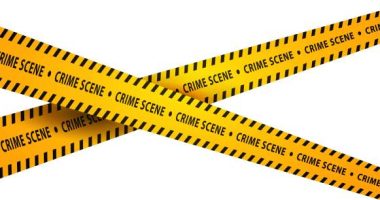The Investigator must make it sure that evidence must be collected during a systematic and careful manner. The process of evidence collection begins firstly with the crime scene survey/walk-through, followed by a establishment of the evidence collection sequence to be used. There are various methods which can be adopted for the evidence collection based on the type of crime scene. The evidence collection sequence could also be based on the subsequent information:
- The scene location: whether the crime has occurred inside premises or within a vehicle or it is an exterior one.
- The condition of the evidence: the condition of evidence (Whether the evidence is fragile or stable) plays an important role in choosing which evidence collection method is to be used.
- Weather conditions which could affect the scene or evidence within.
- Scene management considerations which can alter or contaminate the evidence.
Investigators should use the acceptable equipment when collecting evidence. Equipments that are required for collection of evidences must be sterile so as to avoid contamination of evidence. Various equipments are used to collect evidence. Few of them are named below:

1. Latex gloves/nitrile gloves (N-DEX, non-latex):- helps in preventing contamination as well as any kind of hazardous exposure to the hands of personnel collecting evidence.
2. Forceps- Forceps and similar tools may need to be wont to devour small items.
3. Tweezers
4. Scalpels
5. Swabs
6. Paper bags
7. Plastic bags
8. Cardboard boxes
9. Wrapping paper
10. Hand tools
11. Thermometer
Evidence Marking and Packaging: Evidences collected from the scene of crime or received during the investigation of crime scene should be catalogued and packaged before leaving the scene to prevent loss or cross-contamination. Mark the item of evidence when possible. Evidence which can’t be marked, like soil, hair and any stains, should be placed in an appropriate container or envelope.
An important point that is to be kept in mind is that the evidences marked directly might result in interference with the forensic analysis and hence marking should always be done on outer packaging. When marking evidence include the following:
Case number
Item number
Date recovered or received
Investigator’s initials Evidence that has been inventoried, marked and ready for submittal (or to be returned to the investigating agency) is packaged in an appropriate container and labeled per agency protocol. A trained investigator or evidence collector arrives at the crime scene with the all kinds of packaging materials and tools able to encounter any type of situation. In order to prevent any change in evidence, the evidence must be packaged carefully.
The type of packaging depends on the type of evidence. The evidence must be properly packaged, properly labeled and sealed with appropriate initials to maintain chain of custody. The evidence must be packaged in its original condition as it is found at the crime scene. The objects with the trace evidence must be sent as whole until unless it is not possible to transport the whole item such as wall. As sometimes it takes a long time for a crime lab to processed the evidence so it is necessary that the evidence must be packaged in such a manner that the conditions such as evaporation, breakage etc. should not change its condition.
While packaging the chances of cross contamination must be ended. Each item must be packaged in separate container. Every package must be labeled with all the essential details such as Case FIR No., Item No., Type of Evidence (fragile/stable) etc. After labeling the package must be sealed with evidence tape. Take entire piece of evidence as it found on the crime scene, if possible. New and unused packaging materials should be used. Evidence must be sealed using proper methods which prevent tampering. For powders like drugs or others ordinary mailing envelopes should not be used because powders will leak of their corners.
1. Unbreakable Plastic pill bottles with pressure lids or in Manila envelopes, screwcap glass vials, or cardboard pillboxes- wont to store trace evidence like optical fiber etc.
2. Paper bags and boxes- Used to package larger and/or heavier pieces of evidence.
3. Clean Paint Cans- Used to store Arson evidence.
4. Paper bags or Manila envelopes- Used to store Blood stained materials/clothing after air drying.
5. Air tight containers- used to store

a) Blood-soaked clothing because the trapped moisture may cause the growth of mildew & mold and destroy the blood.
b) Charred clothing or debris on the contrariety to avoid evaporation of volatile petroleum residues.
6. Druggist Fold- Used to package small amounts of trace evidence.
7. Brown paper bags of available sizes, Earth guard bags & Butcher paper which can be folded and properly taped shut- Used to store damp or bloody items.
8. Non-porous container such as paper or cardboard- Used to store any items with residual moisture or bodily fluids which should be thoroughly air-dried and then packaged so as to prevent the destruction of DNA by bacteria, mold, etc.
9. Glass Bottle with tight-fitting lid- Used to place flammable liquids.
10. Screw Cap Jar or Vial- Used to place liquids or solids.
for more updates, subscribe to our blog.









